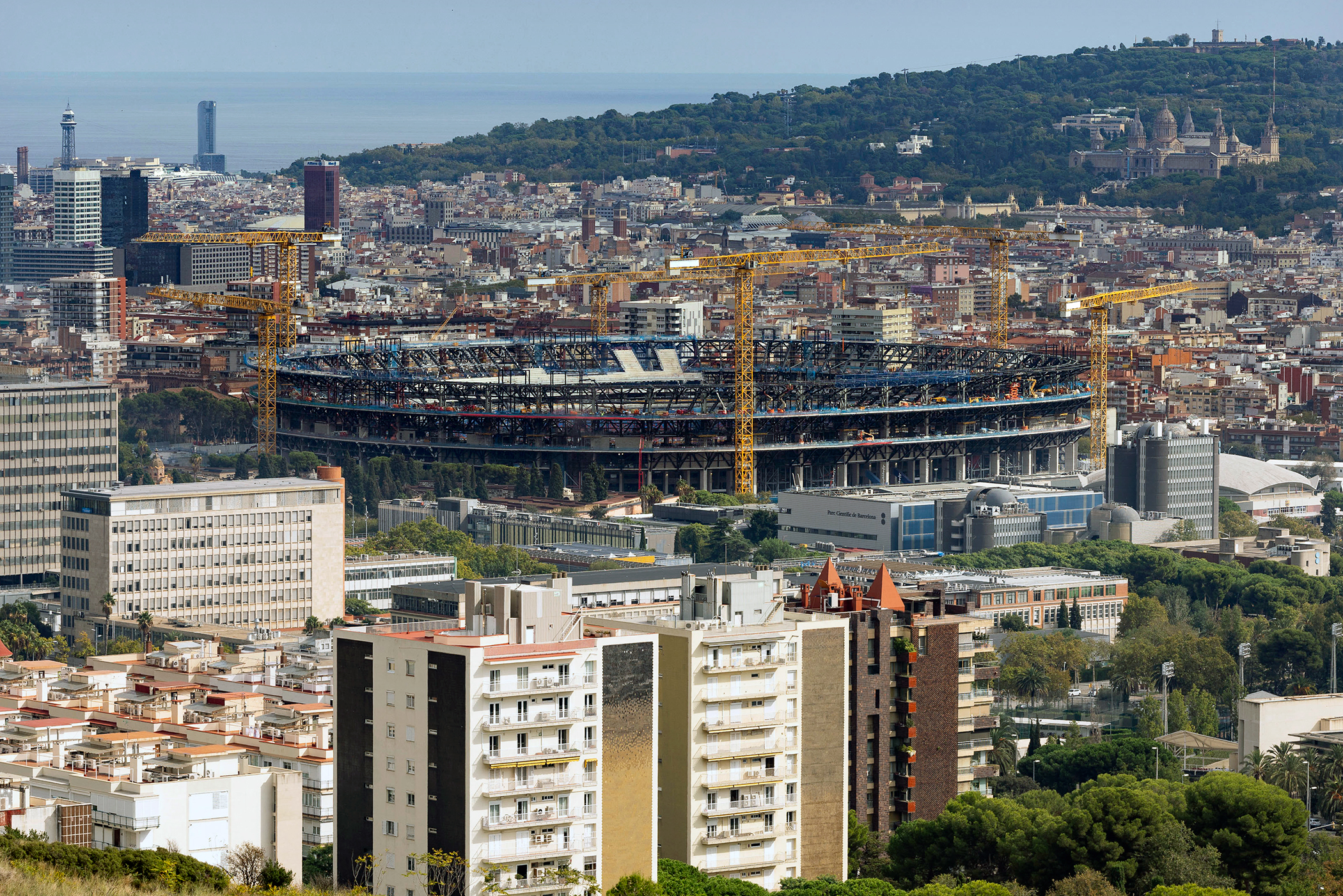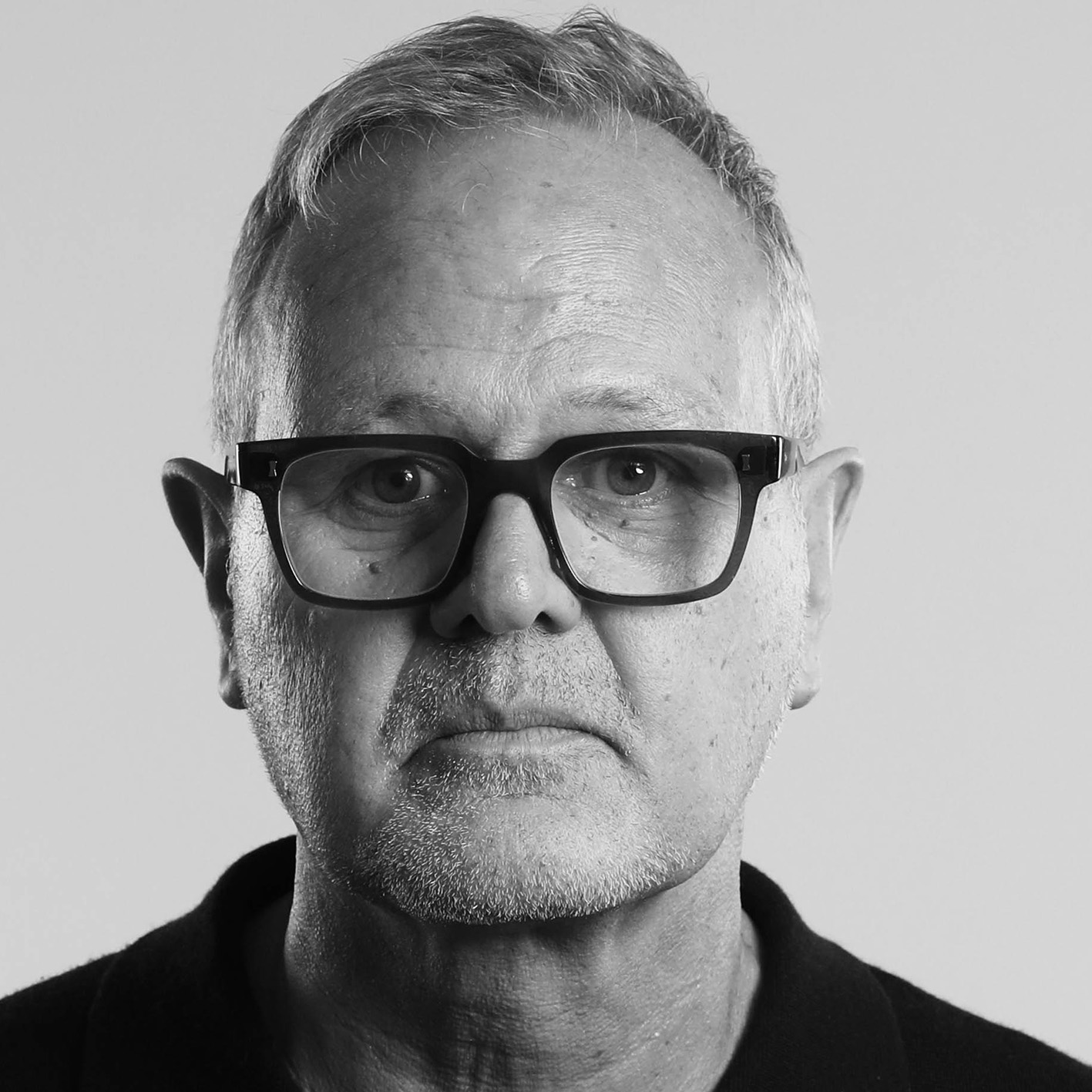One day next month, part of the upgraded ‘Spotify Camp Nou’ will open in Barcelona as the architectural arms race of European football stadiums intensifies.
The new grounds of the biggest clubs are competing for scale, grandeur, naming rights and what used to be called turnstile cash. Barcelona travel to Real Madrid for the Clasico this weekend knowing their claim to inhabit the game’s largest cathedral will be restored in stages after two years in temporary accommodation at the Olympic Stadium.
The Santiago Bernabeu, which will host them, was refurbished with a wraparound skin to become a more fitting luxury entertainment centre. Gone were the echoes of the Puskás and Di Stéfano era, the salty taste of Madrid life the old Bernabeu evoked.
This week Barcelona’s treasurer Ferran Olive admitted they should have started the Camp Nou’s reconstruction “years ago,” adding, “we’re late.”
La Liga’s house envy can be traced in part to Europe’s paranoia about the financial dominance of England’s Premier League. Status anxiety, commercial mega-partnerships and gigantism are also driving competition in the 60,000-100,000 seat range. In an increasingly Americanised sport, you can trace the construction template as well to the major US cities.
Related articles:
If ‘Spotify Camp Nou’ sounds all wrong, it’s here to stay. A club that recoiled at shirt sponsorships before making an exception for Unicef went full download in 2022 on a colossal deal with the music streamer. With the refurb, the club expects annual stadium revenue to rise on completion in 2027 from £151m now to £347m. The final phase is a kind of Barcelona heresy: a full roof.
While Valencia have a third go at selling the historic Mestalla, Inter and AC Milan prepare to shed the skin of the San Siro for a new 71,500-seat amphitheatre in time for the 2032 European Championship. It’s not just Spain and England in the grip of a building frenzy.
Here at home, Everton’s Hill Dickinson Stadium is the latest architectural behemoth. When it opened in 2006 with 60,704 vantage points, Arsenal’s Emirates Stadium satisfied the dreams of the most ambitious Islingtonian. Now, there is talk of the team relocating to Wembley for a rebuild that would add 10,000 places and take the Emirates into the Tottenham Hotspur Stadium modernity league.
In Manchester, United’s fantasy is a 100,000-seat arena with a mini-city wrapped around it, with an estimated £2bn cost. Urban regeneration is the go-to spin for clubs chasing local authority help and even central government funding. Manchester City are also pressing on with a £300m expansion of the Etihad Stadium from 53,400 to 60,000 seats.
Another club in nation state ownership, Newcastle, are trying to decide whether to redevelop St James’ Park or start afresh at Leazes Park. Reported uncertainty over how much the club’s Saudi owners would be willing to invest in construction makes this one a slow burner.
In London, Stamford Bridge’s 42,000 capacity has long tormented Chelsea. They want 60,000 places (that magic minimum number again) but remain stuck in the bind of whether to redevelop ‘the Bridge’ or build a new ground nearby. Either option would be hideously expensive.
Fans of all these clubs will feel both awe and dread. Awe, because the Evertonian flavour of Goodison Park was consigned to history faster than predicted when supporters drank in the Hill Dickinson’s splendour. Nostalgia for what White Hart Lane represented was set aside when fans began gathering in what feels like a giant outdoor business class lounge.
The dread kicks in when regulars at the biggest grounds try to get there, or get away after the match – an under-reported trial of the spirit. The derision heaped on those who leave before the end ignores their understandable urge to avoid heading to a train station at 10pm at the same time as 60,000 others.
When they were built, the new homes occupied by Middlesbrough, Southampton, Leicester and Brighton assumed heroic scale. All clubs in the 20,000-40,000 bracket are now scrambling for other ways to compete with rivals bringing in two or three times their gate receipts. Player sales make up much of the difference. Happily, Bournemouth started the week third in the Premier League table with an 11,307 capacity.
Now, even adequate big grounds are considered anachronistic. It’s forever champagne o’clock for lawyers, developers, builders and architects. But before we grow too smug about the UK’s arenas, fan surveys say the actual football and tradition are still more important than architecture. Popularity polls tend to nominate Barcelona, Real Madrid, AC/Inter Milan, Bayern Munich and Liverpool as the top five.
If the football boom ever ends, and these super-grounds struggle (like British pubs increasingly) to get people in, there will be a lot of half-empty real estate out there – palaces, that could perhaps serve as climate disaster havens, like the New Orleans Superdome after Hurricane Katrina.
For now, the construction mania is itself a good spectator sport. It will leave a replica urban American landscape across Europe. The stadiums shrink the average spectator to a dot and create vast human flows onto transport networks.
We talk all the time about the inflationary traffic of players between the richest clubs. Those big names will come and go. But the stunning architecture of the 21st century TV rights and speculator bonanza will remain. Enjoy – and good luck getting home.
Photograph by Josep Lago/Getty Images



